Genus Nilaparvata Higher classification Nilaparvata | Scientific name Nilaparvata lugens Rank Species | |
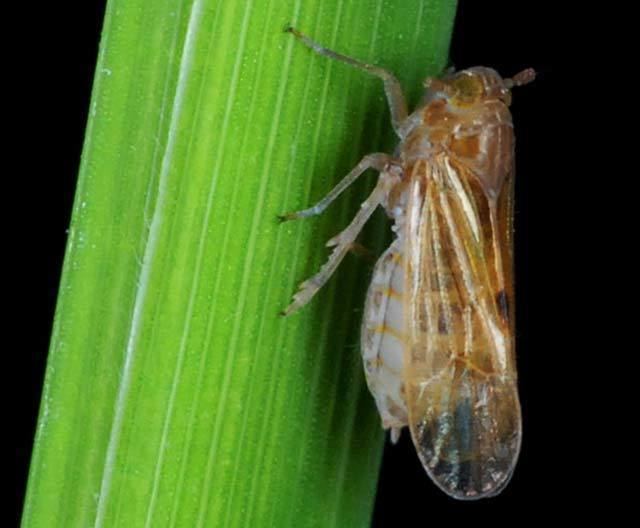 | ||
Similar Planthopper, Nilaparvata, Insect, Whitebacked plant‑ ho, Delphacidae | ||
The brown planthopper (BPH), Nilaparvata lugens (Stål) (Hemiptera: Delphacidae) is a planthopper species that feeds on rice plants (Oryza sativa L.). BPH are among the most important pests of rice, and rice is the major staple crop for about half the world's population. They damage rice directly through feeding and also by transmitting two viruses, rice ragged stunt virus and rice grassy stunt virus. Up to 60% yield loss is common in susceptible rice cultivars attacked by BPH. The BPH are distributed in: Australia, Bangladesh, Bhutan, Burma (Myanmar), Cambodia, China, Fiji, India, Indonesia, Japan, North and South Korea, Laos, Malaysia, Nepal, Pakistan, Papua New Guinea, Philippines, Sri Lanka, Taiwan, Thailand, and Vietnam. Their host plant other than rice is Leersia hexandra.
Contents
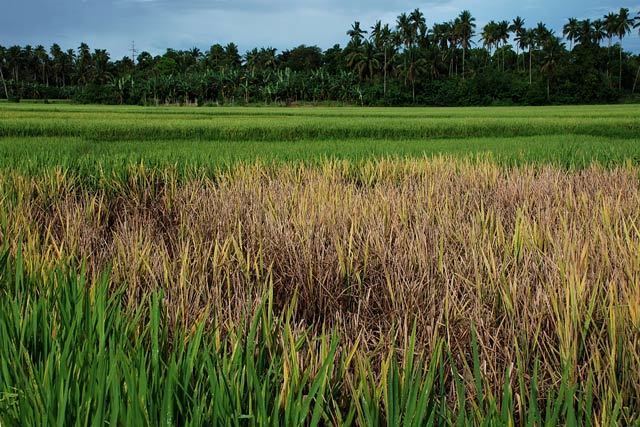
Biology
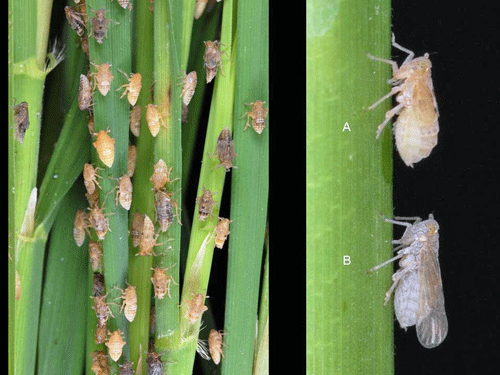
The brown planthopper is dimorphic, with fully winged 'macropterous' and truncate-winged 'brachypterous' forms. The macropterous forms are potentially migrants and are responsible for colonizing new fields. After settling down on the rice plants, they produce the next generation in which most of the female insects develop as brachypters and males as macropters. Adults usually mate on the day of emergence, and the females start laying eggs from the day following mating. Brachypterous females lay 300 to 350 eggs, while macropterous females lay fewer eggs. The eggs are thrust in a straight line generally along the mid-region of the leaf sheath. Eggs hatch in about six to nine days. The newly hatched nymphs are cottony white, and turn purple brown with in an hour; they feed on plant sap. They undergo five instars to become adults.
Damage
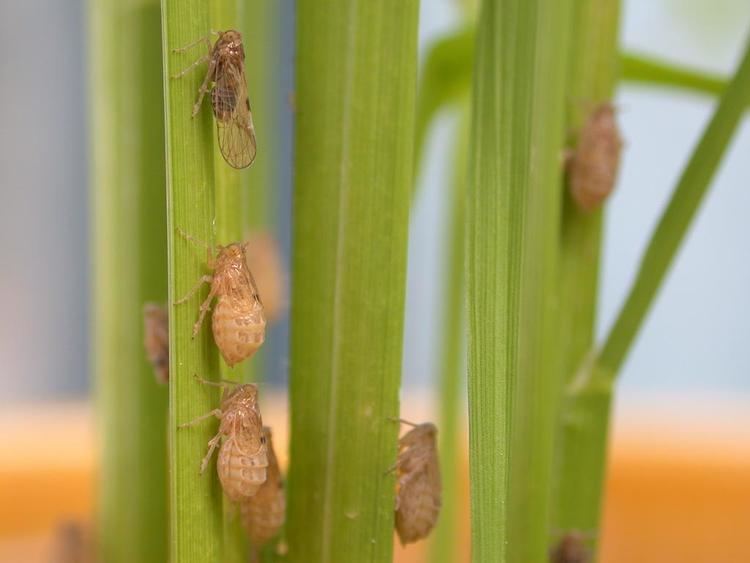
BPH infest the rice crop at all stages of plant growth. As a result of feeding by both nymphs and adults at the base of the tillers, plants turn yellow and dry up rapidly. At early infestation, round, yellow patches appear, which soon turn brownish due to the drying up of the plants. This condition is called 'hopper burn'. Temperature is a critical factor in the life activities of the insect. The hatchability and survival rate are the highest around 25 °C. Eggs are very sensitive to desiccation and soon shrivel when the host plant starts wilting. The population growth of brown plant hopper is maximum at a temperature range of 28 to 30 °C.
Excessive use of urea as nitrogenous fertilizer and insecticides can lead to outbreaks by increasing the fecundity of the brown planthopper, and by reducing populations of natural enemies. In 2011, the Thai government announced an initiative to address brown planthoppers that included restricting the use of outbreak-causing insecticides including abamectin and cypermethrin - the decision was supported by the International Rice Research Institute (IRRI). IRRI also outlined recommendations in an action plan to help smartly manage planthopper outbreaks. In December 2011, the IRRI held a conference in Vietnam to address the threats of insecticide misuse and explore options for mitigation.
Predators
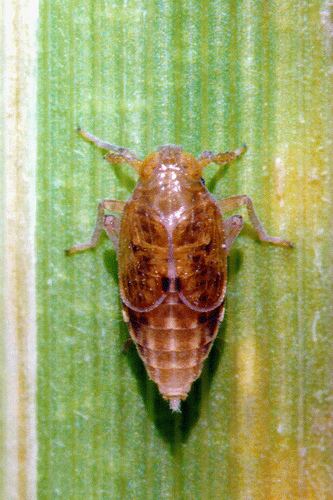
Predators of this insect include the spiders Pardosa pseudoannulata and Araneus inustus. In some cases, BPHs lay eggs in the rice seed beds (also known as rice nurseries) shortly before transplanting, so enter the field in this manner.
Differential mortality of predators and hoppers does not appear to be the primary factor for insecticide-induced resurgence. Some insecticides evidently increase the protein content of BPH male accessory glands, and thereby increase planthopper fecundity. Some insecticides increase the amount of amino acids and sucrose available in the phloem of rice plants, and thereby increase BPH survival.
Management and control
Rice varieties with resistance to BPH, e.g. IR64, are important for preventing outbreaks. However, in areas with low insecticide use, high levels of BPH resistance are not usually necessary. Chemical mutagenesis can significantly increase or decrease BPH resistance levels of rice. Some chemical insecticides, e.g. imidacloprid, can affect the gene expression of rice and thereby increase susceptibility to BPH.
In an attempt to make BPH control more species-specific, researchers are trying to develop methods of turning off specific BPH genes for digestion-, defense- and xenobiotic metabolism. Many novel genes for these functions have been detected in tissue from BPH intestines.
Some plant lectins are antifeedants to BPH and if properly formulated may have the potential to protect rice from BPH.
Impact of climate change
Research indicates that BPH nymphs are already living at the upper limits of tolerable temperatures. This suggests that climate warming in tropical regions with occasional extremely high temperatures would limit the survival and distribution of BPH.
